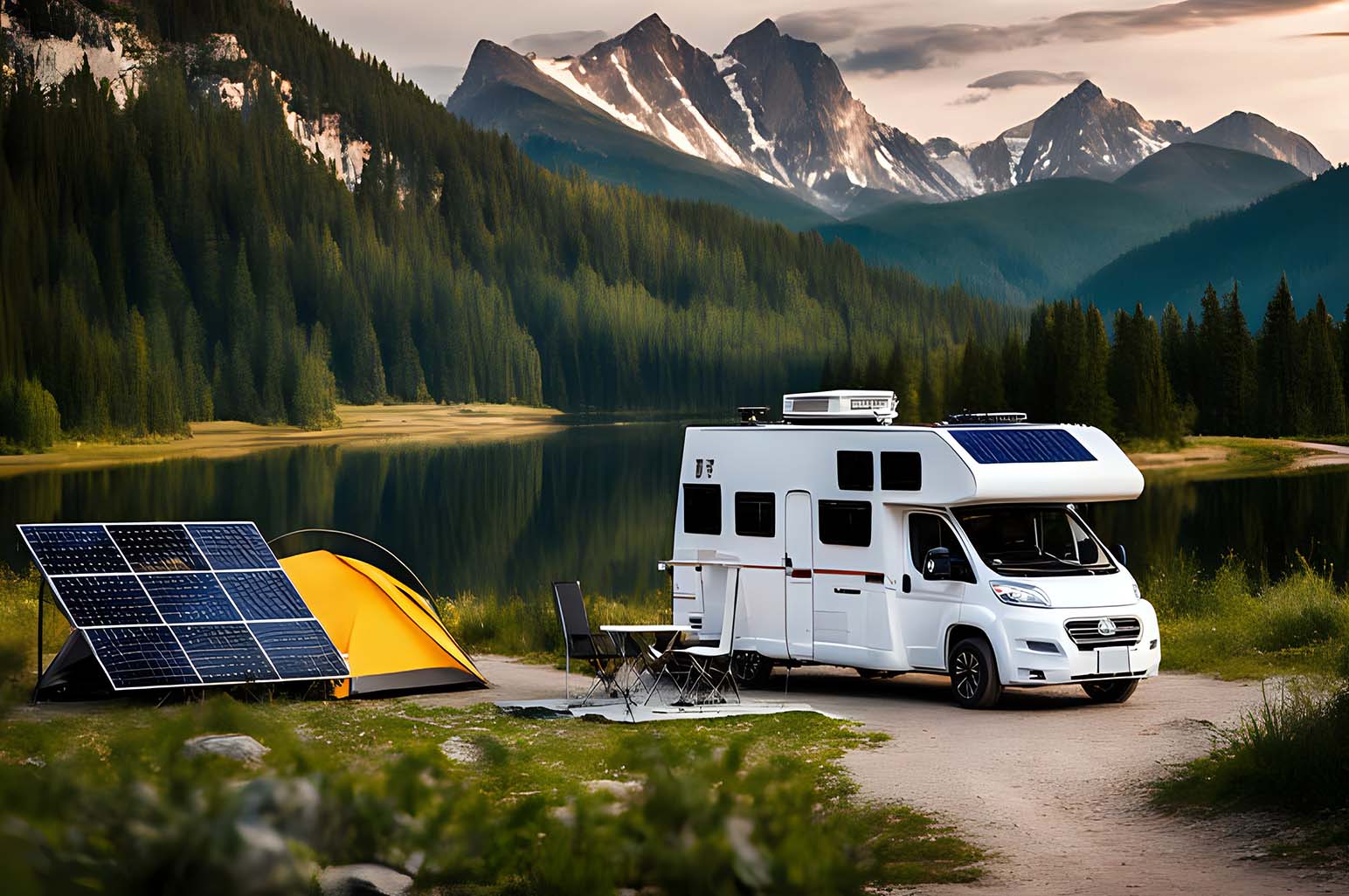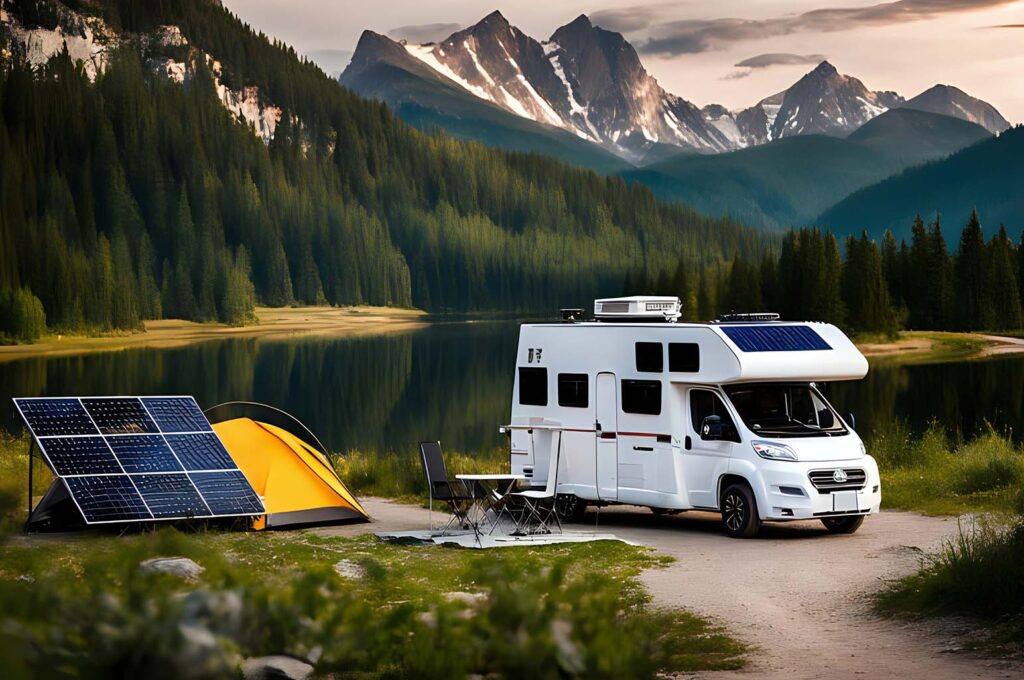RV Solar Energy: Power Your Adventures Off-Grid(2025 guide)

The freedom of off-grid travel with RV solar energy. Learn how to install and maintain an RV solar system. This guide covers everything from components to costs, simplifying your adventures.

RV solar energy for adventures
Introduction: Why You Need RV Solar Energy for Your Adventures
RV solar energy is transforming the way travelers enjoy life on the road. Imagine boondocking without worries about hookups or noisy generators. Solar energy offers freedom, flexibility, and a clean power source for your RV. This comprehensive guide will help you get started with RV solar energy, covering everything from system basics to installation, benefits, and maintenance.
The Basics of RV Solar Energy: How It Works
RV solar systems help you turn sunlight into power for your RV. They charge your RV batteries so you can run lights, charge your phone, and use small tools like a coffee maker, fan, or laptop. Some systems can even support larger tools like a small fridge or microwave, depending on their size. You can utilize solar power during the day and store excess energy for use at night.
RV solar energy works by capturing sunlight and converting it into electricity to power your appliances and devices off the grid. Here’s what makes the magic happen:
Understanding the Core Components of Your RV Solar Energy System

RVsolar generator
- Solar Panels: The collectors that capture sunlight and produce electricity.
- Charge Controller: The traffic cop ensuring your batteries aren’t overcharged or drained too much.
- Battery Bank: The storage tank where your solar energy waits until you need it.
- Inverter: The power converter that changes stored electricity into a form your RV appliances can use.
- Wiring and Mounting Hardware: The wires and mounts that connect everything securely and safely.
The Big Benefits of RV Solar Energy
Investing in an RV solar energy system is wise for many reasons:
- Freedom and Flexibility: No need to hunt for campgrounds with electrical hookups—go anywhere!
- Quiet Power: Unlike noisy gas generators, solar panels work silently.
- Lower Costs Over Time: Save money on fuel and campground fees.
- Environmentally Friendly: Solar power doesn’t pollute. It’s clean and renewable.
- Safety and Reliability: Your solar system provides consistent power no matter where you roam.
There are two ways to set up an RV solar system:
- Roof-mounted system
- Portable system
Some RV owners even use a mix of both systems. They might use roof panels to charge during travel and bring a portable kit for extra energy while camping.
Choosing the Right RV Solar Energy System for You
Finding the perfect solar system is easier when you follow these steps:
1. Calculate Your Power Needs
Start by figuring out how many watts your RV uses daily. Think about lights, fridge, water pumps, and charging needs.
2. Understand Different Panel Types
- Monocrystalline Panels: Efficient, long-lasting, great for limited space.
- Polycrystalline Panels: More affordable but slightly less efficient.
- Flexible Panels: Lightweight and easy to mount on curved surfaces.
3. Sizing Your Battery Bank
Batteries are rated in amp-hours (Ah). More amp-hours mean longer energy storage. Choose based on your daily power usage.
4. Charge Controller and Inverter Choices
- Charge Controllers: PWM (basic) vs. MPPT (more efficient). MPPT is recommended for better power harvesting.
- Inverters: Modified sine wave (budget-friendly) vs. pure sine wave (clean power compatible with all electronics). A pure sine wave is ideal.
Expert Tip: Consider professional installation for larger systems, but many DIY kits make setup manageable for beginners.
A Step-by-Step Guide to RV Solar Energy Installation
Installing your RV solar system can be straightforward if you follow these steps:
Step 1: Planning and Panel Placement
Place solar panels where they get the most direct sun, typically on the RV roof.
Step 2: Securing Your Solar Panels
Use strong mounting brackets or adhesive to keep panels fixed during travel.
Step 3: Running Wires and Connecting Components
Keep wires neat and safe. Use appropriate gauge wires to avoid power loss.
Step 4: Connecting to the Battery Bank
Ensure proper connections to your batteries with correct polarity.
Step 5: Testing Your System
Turn everything on carefully and test the output meters to confirm the power flow.
Maintaining Your RV Solar Energy System
Cleaning Your Panels
10 brief ways to clean your solar panels:
- Turn off your solar power system before cleaning to ensure safety.
- Clean panels when they are cool, preferably early morning or late afternoon.
- Use a garden hose to gently rinse off loose dirt and dust.
- Avoid high-pressure water as it can damage panels or seals.
- Use a soft cloth, sponge, or a soft-bristled brush with plain water or mild biodegradable soap if needed.
- Do not use abrasive materials or strong chemicals that may scratch or leave residue.
- Avoid washing panels under direct midday sun to prevent water spots or soap film.
- Regularly remove debris like leaves or bird droppings promptly to maintain efficiency.
- Check wiring and connections while cleaning to ensure everything is secure.
- Clean your panels every 3-6 months or more often if traveling on dusty roads or in dry climates to keep power output op
Checking Connections
Regularly inspect wiring and connections to prevent power drops.
Monitoring Your Batteries
Use a battery monitor to avoid overcharging and extend battery life.
Benefits of RV Solar Systems
RV solar systems offer many simple and useful advantages. For people who enjoy travel and nature, solar power can change the way they live on the road. Here are some clear and helpful reasons why more RV owners are using solar:
- No fuel needed: Solar power uses sunlight, which is free. You don’t have to carry gas or propane. You don’t have to visit gas stations often. You also don’t have to worry about running out of fuel at night or in remote areas.
- Low noise: Solar panels make no noise. They are completely quiet. Gas generators often hum loudly, which can disturb your peace or bother people nearby. With solar power, you can enjoy silence and sleep better at night.
- Go off-grid: You can park your RV anywhere—even far from a power hookup. You don’t need to stay in crowded campgrounds. This gives you more freedom to explore beaches, forests, deserts, and mountains. Solar lets you stay in beautiful places without needing outside electricity.
- Low maintenance: Solar systems do not break easily. They have no moving parts, so they rarely wear out. Most solar panels last for 20 years or more. You only need to wipe off dust or dirt once in a while to keep them working well.
- Lower long-term costs: After you install your system, you don’t need to pay every day or every month. No fuel costs, no plug-in fees. Over time, the system pays for itself. If you camp a lot, solar helps you save money in the long run.
- Eco-friendly: Solar power is clean and renewable. It does not release smoke, carbon, or chemicals. If you care about nature, using the sun helps reduce pollution and protect the environment around you.
- Charge anytime there’s sun: As long as the sun is shining, you can collect power. This works even while driving or while parked. You can charge during breakfast, hiking, or even napping. You don’t have to stop what you’re doing.
For many RV travelers, these simple benefits lead to a more peaceful, affordable, and enjoyable experience on the road. Solar systems give you freedom with fewer worries.
RV Solar System Cost in 2025?
| System Size | What It Can Power | Price Range | Price Range (Professional Installation ) |
| 100W – 200W | Lights, phones, and small fans | $300 – $600 | $500 – $900 |
| 300W – 400W | Small fridge, laptop, fan | $700 – $1,200 | $1,000 – $1,800 |
| 500W – 800W | Microwave, TV, CPAP machine | $1,300 – $2,500 | $2,000 – $3,500 |
| 1000W or more | Full system, AC backup | $3,000 – $6,000 | $4,500 – $8,000+ |
The cost of an RV solar system in 2025 can vary a lot. It depends on how much power you need and how you install it: DIY or professional installation.
RV Solar System vs. Portable Generator: What’s the Difference?
| Feature | RV Solar System | Portable Generator |
|---|---|---|
| Power Source | Sunlight (renewable, free after install) | Gasoline, propane, or diesel (non-renewable, ongoing cost) |
| How It Works | Panels on the RV roof collect sunlight, charge batteries for silent, clean power; good for daily needs | Uses fuel to run the engine, providing instant electricity on demand |
| Noise & Smell | Silent, no fumes | Noisy, produces exhaust fumes |
| Maintenance | Low (occasional cleaning & battery checks) | Medium-High (needs fuel, oil, spark plug changes) |
| Cost | Higher upfront, but no fuel cost, saves over time | Lower upfront cost for small models, but ongoing fuel cost |
| Best For | Panels on the RV roof collect sunlight, charge batteries for silent, clean power; good for daily needs | Emergency backup, when you need a lot of power quickly |
| Environment | Clean, eco-friendly | Pollutes the air, uses fossil fuels |
How Do They Work Together?
Many RVers use both:
- RV Solar System: Handles your basic needs—lights, fans, fridge, charging phones/laptops—silently and all day, as long as there’s sun.
- Portable Generator: Acts as a backup for cloudy days or when high-power appliances (like AC or microwave) are needed, or if you need a fast battery recharge.
Which Should I Choose?
Beginner/short trips: You can start with a portable generator and add solar later as you learn your energy needs.
Full-time boondocking or quiet camping: Invest in a good RV solar system first.
Frequent bad weather or AC needs: Add a portable generator as backup for peace of mind.
Compared to a full RV solar system, which can cost more and take time to install, the portable solar generator offers a lower price for a similar system size, making it an excellent choice for part-time campers or anyone looking for quick, reliable power.
For those who camp often or live off-grid, a full solar setup with a larger capacity will provide more power. But for short trips, occasional campers, or those who want to keep things simple, a portable solar generator like the EcoFlow RIVER 2 Pro might be all you need—and a lot easier to manage.
Conclusion
RV solar energy is a fantastic investment in freedom, convenience, and sustainability. Whether you’re an off-grid traveler or weekend adventurer, solar power opens endless possibilities for reliable, clean energy on the road. Start your solar journey today and enjoy the peace of mind that comes with power from the sun.
FAQ
1. How much does an RV solar energy system cost?
Costs range widely based on system size, from a few hundred to several thousand dollars.
2. Can an RV solar energy system run my air conditioner?
It depends on your system size; running high-power appliances like air conditioners requires larger setups.
3. How long does it take for RV solar panels to charge my batteries?
Usually, 5-10 hours of good sunlight charges the batteries fully.
4. Do I need solar power if I only camp at RV parks?
Solar power is still helpful to reduce campground electricity costs and provide backup power.
5. What are the best brands for RV solar energy systems?
Top brands include Renogy, Goal Zero, Jackery, and EcoFlow.
